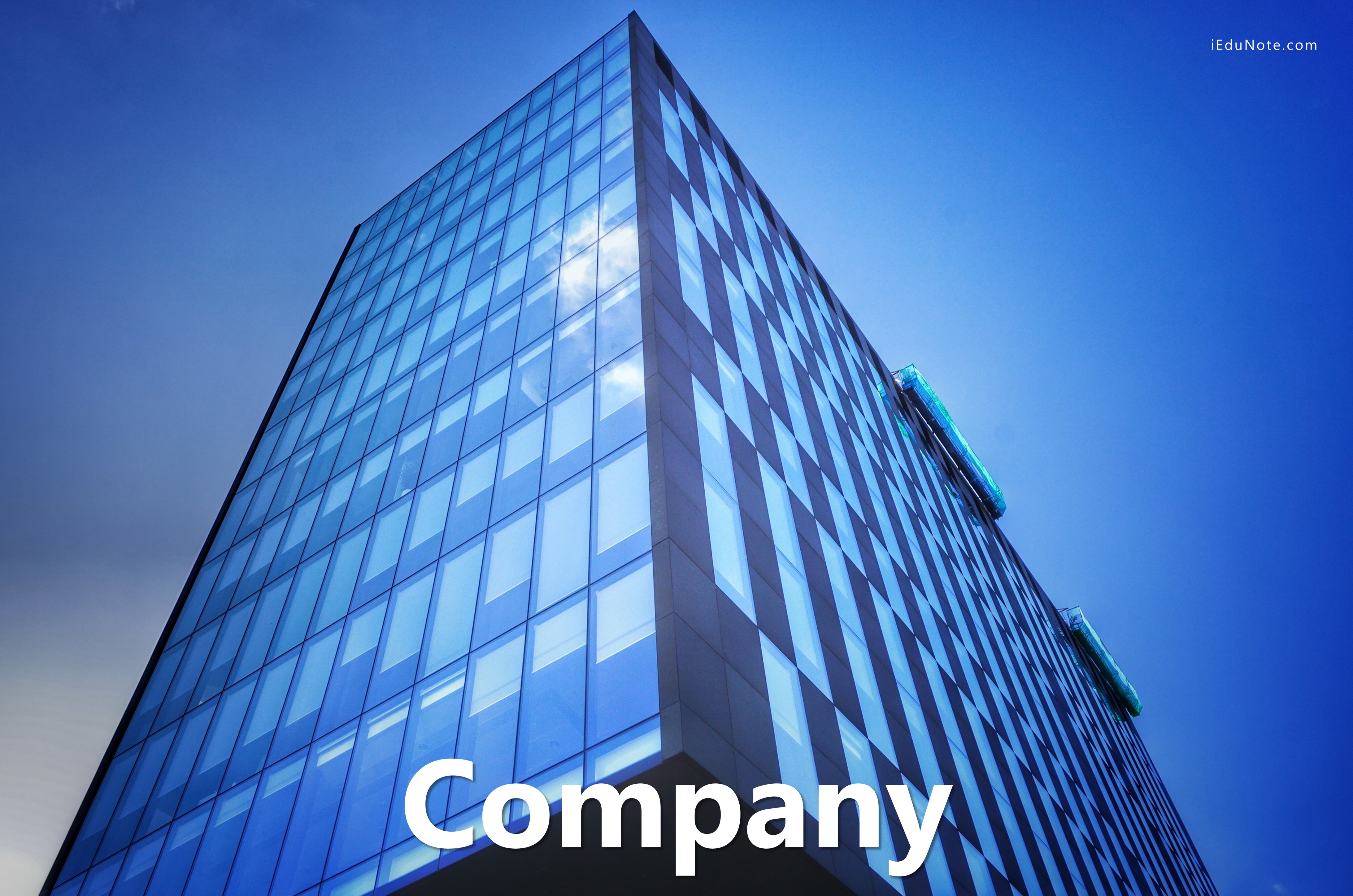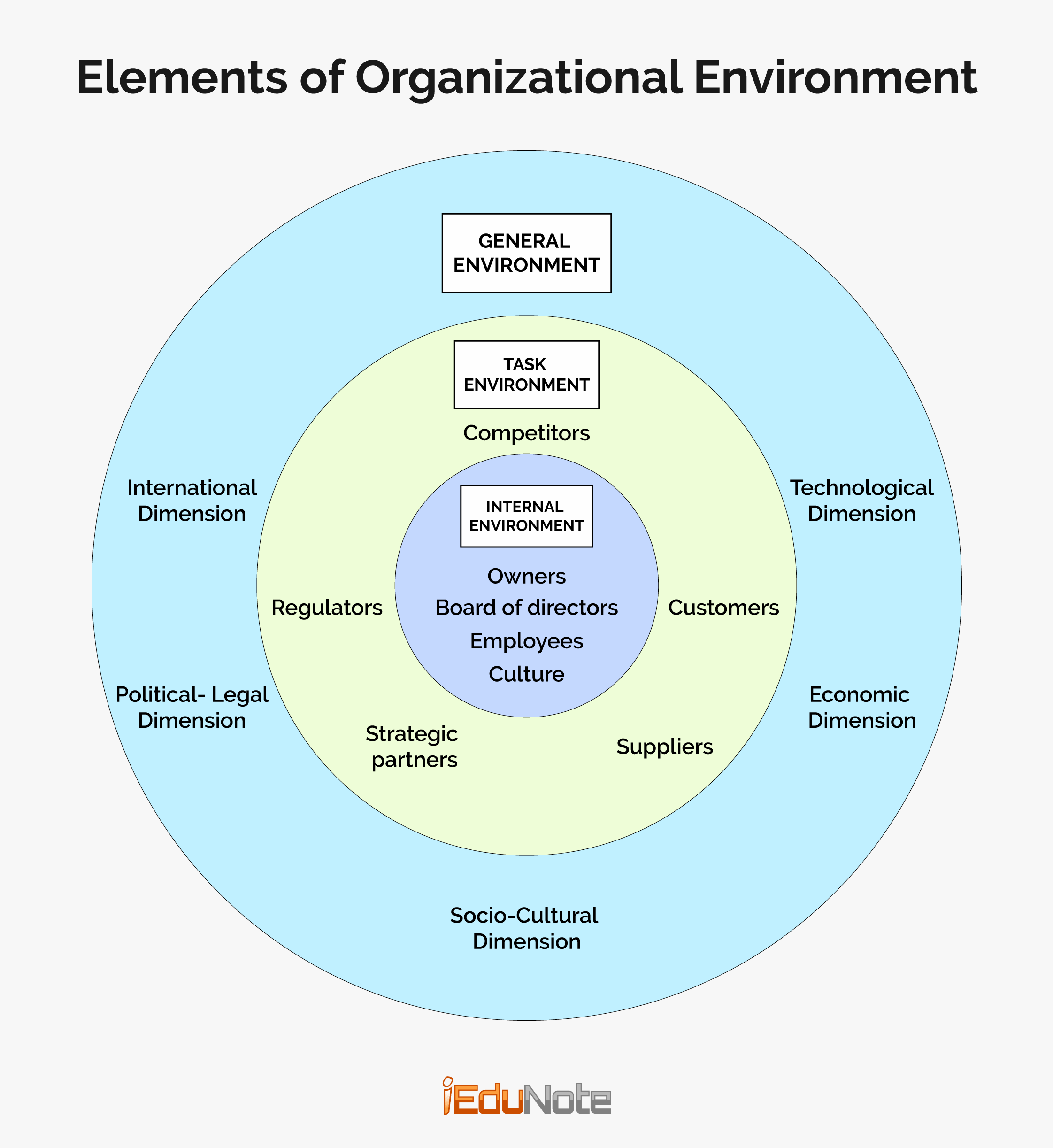Location refers to the choice of region and the selection of a particular site for setting up a business or factory. But the choice is made only after considering the cost and benefits of different alternative sites. It is a strategic decision that cannot be changed once taken.
If at all changed only at considerable loss, the location should be selected as per its requirements and circumstances. Each plant is a case in itself. A business person should try to attempt at the optimum or ideal location. An ideal location is one where the cost of the product is kept to a minimum, with a large market share, the least risk, and the maximum social gain.
It is the place of maximum net advantage or which gives the lowest unit cost of production and distribution, for achieving this objective, this purpose.
Learn Business Location Analysis: Factors, Objectives, and Success. Find the perfect site based on demographics, competition, traffic, and economics.
What is Business Location Analysis?
Location analysis is a dynamic process where entrepreneur analyses and compares the appropriateness or otherwise of alternative sites to select the best site for a given enterprise.
It consists of the following:
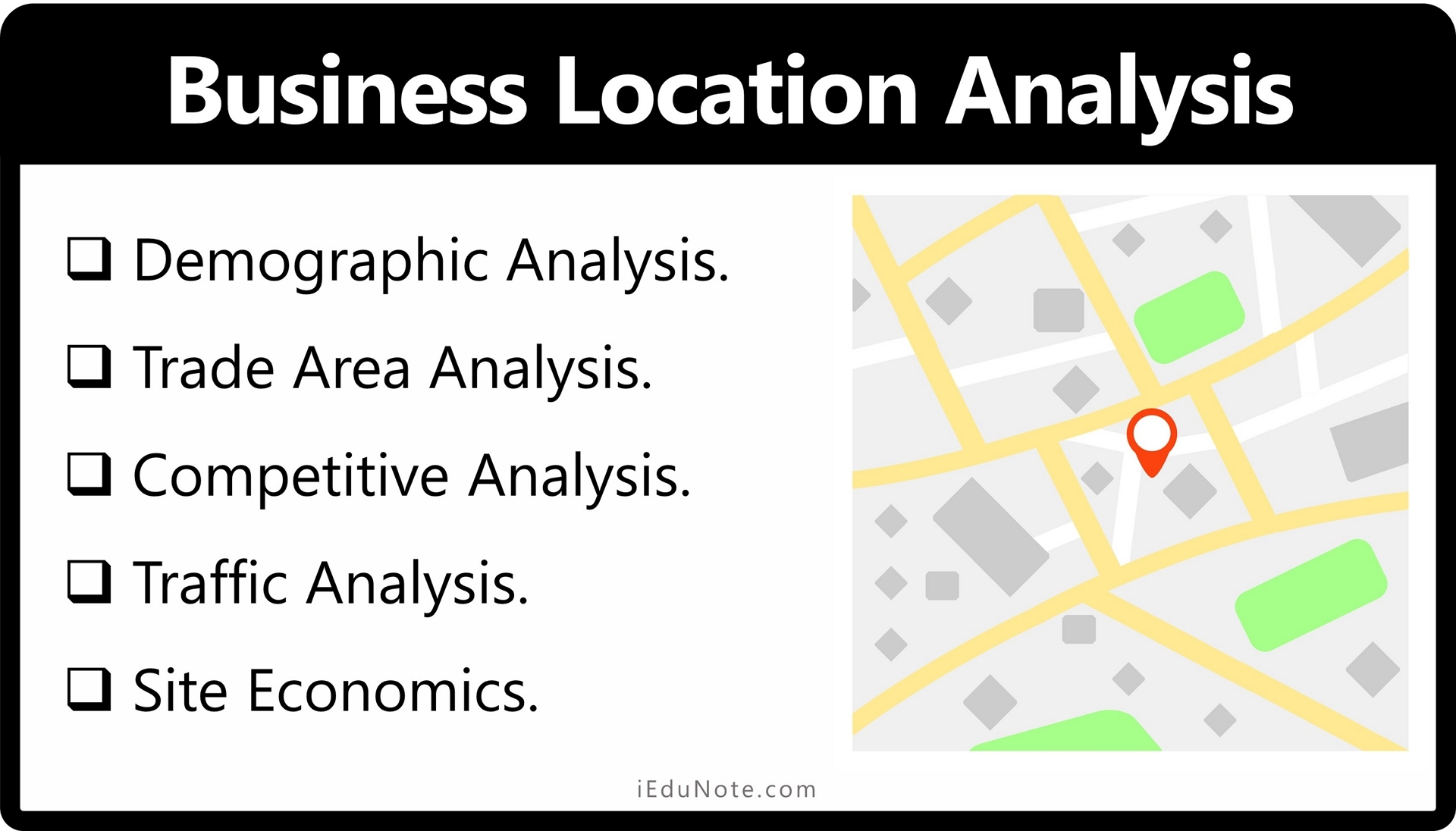
Demographic Analysis
It involves the study of population in the area in terms of total population (in no.), age composition, per capita income, educational level, occupational structure, etc.
Trade Area Analysis
It is an analysis of the geographic area that provides continued clientele to the firm. He would also see the feasibility of accessing the trade area from alternative sites.
Competitive Analysis
It helps to judge the nature, location, size, and quality of competition in a given trade area.
Traffic Analysis
To have a rough idea about the number of potential customers passing by the proposed site during the working hours of the shop, the traffic analysis aims at judging the alternative sites in terms of pedestrian and vehicular traffic passing a site.
Site Economics
Alternative sites are evaluated in terms of establishment costs and operational costs under this.
Costs of the establishment are the cost incurred for permanent physical facilities. Still, operational costs are incurred for running a business on day to day basis, they are also called as running costs.
Objectives of Business Location Analysis
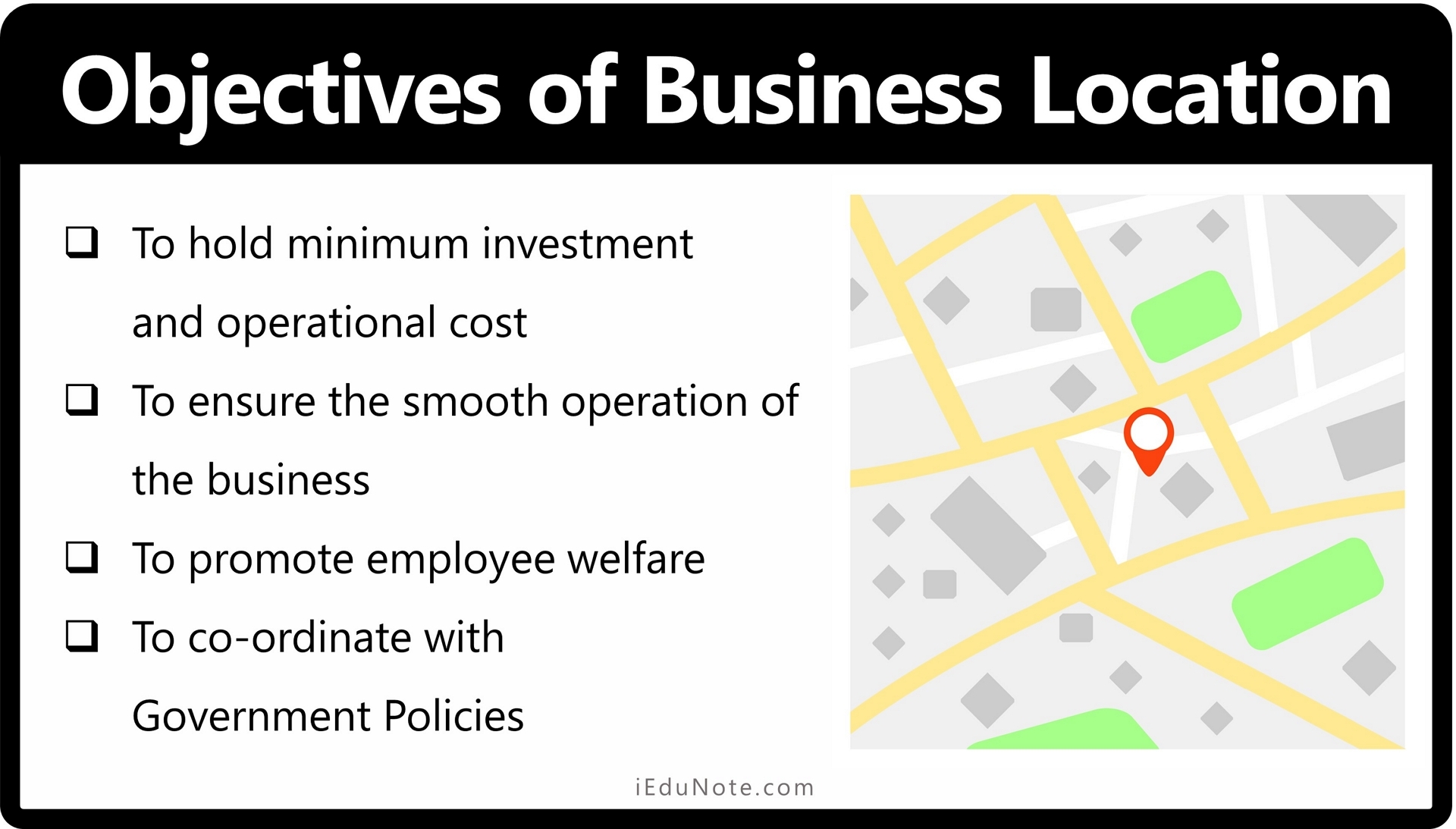
The location of a business must be decided to keep in mind the following objectives:
To hold minimum investment and operational cost
The foremost objective in selecting an ideal location is to ensure minimum investment and lower operational costs.
This could be achieved if the business is located in a place where raw materials, labor, transport, and power are easily, regularly, and sufficiently available.
To ensure the smooth operation of the business.
Another objective of the ideal location is to ensure the smooth operation of the business.
This could be achieved if the business is located in a place where the services of banking, communication, transport, repairs, and maintenance are available easily and regularly.
To promote employee welfare.
If the business is located where the educational recreational, medical, and religious needs of employees are met, they will certainly feel attached to the enterprise. They would develop loyalty and commitment to it.
To co-ordinate with Government Policies.
The entrepreneur, while selecting a location, must ensure that his decision does not conflict with the government policy of balanced regional development.
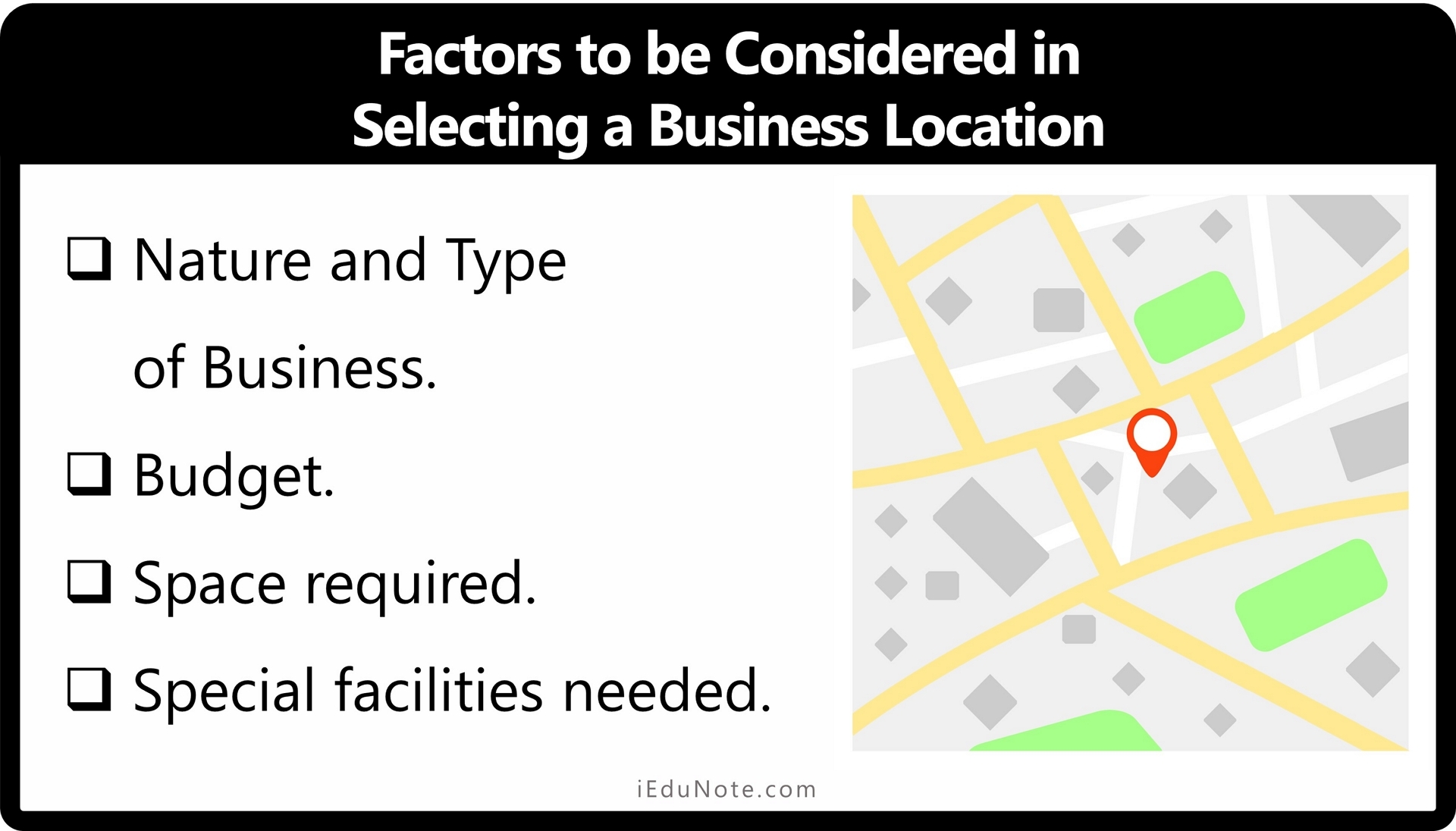
Factors to be Considered in Selecting a Business Location
Selecting the ideal business location is guided by four main factors, namely:
Nature and Type of Business
The nature and type of your business is the single greatest determinant of where the business should be located. Businesses that rely on walk-in customers from the public are the most affected, the main ones being in the service industry.
If your business relies heavily on walk-in clients as opposed to businesses that prospect, then location is everything. Getting your location wrong can spell doom for your business.
In the restaurant business, for example, there are three “main” rules when setting up. These are “LOCATION, LOCATION, and LOCATION.”
This example underscores the importance of a great location for restaurants.
A study of McDonald’s reveals this to be true. Senior management at MacDonald’s will tell you that they are burger salespeople, but their business is real estate.
Therefore, businesses such as restaurants, supermarkets, liquor stores, Ice cream parlors, and the like must be located in easily accessible areas with high levels of human traffic.
In contrast, businesses such as law firms, accountants, software firms, and so forth, which do not rely on high levels of human traffic, can be located in posh offices within office blocks.
Budget
The amount of money you can afford to obtain premises must, of course, come into play. Most first time entrepreneurs will be renting due to budget constraints.
Always try and secure premises that provide the best value for your money, considering the nature of business.
Space required
Certain types of businesses require very large amounts of space.
For example, car dealerships and car rentals require a large space to park their vehicles. This may mean looking for an out of cheap town location.
Special facilities needed
Certain types of businesses require special facilities to carry out their business effectively. For example, IT companies have some very special mechanical, electrical, plumbing, and fire suppression requirements.
Server rooms and computer areas need dedicated cooling units. These must be taken into consideration before settling on a business location.
At one point, we may want to determine the size of the business. This helps in knowing whether it’s growing or not.
Also, you ascertain it to plan its various requirements. If you know the size of your firm, then you’re able to determine its efficiency. Any enterprise is the ether; small, medium or large size.
